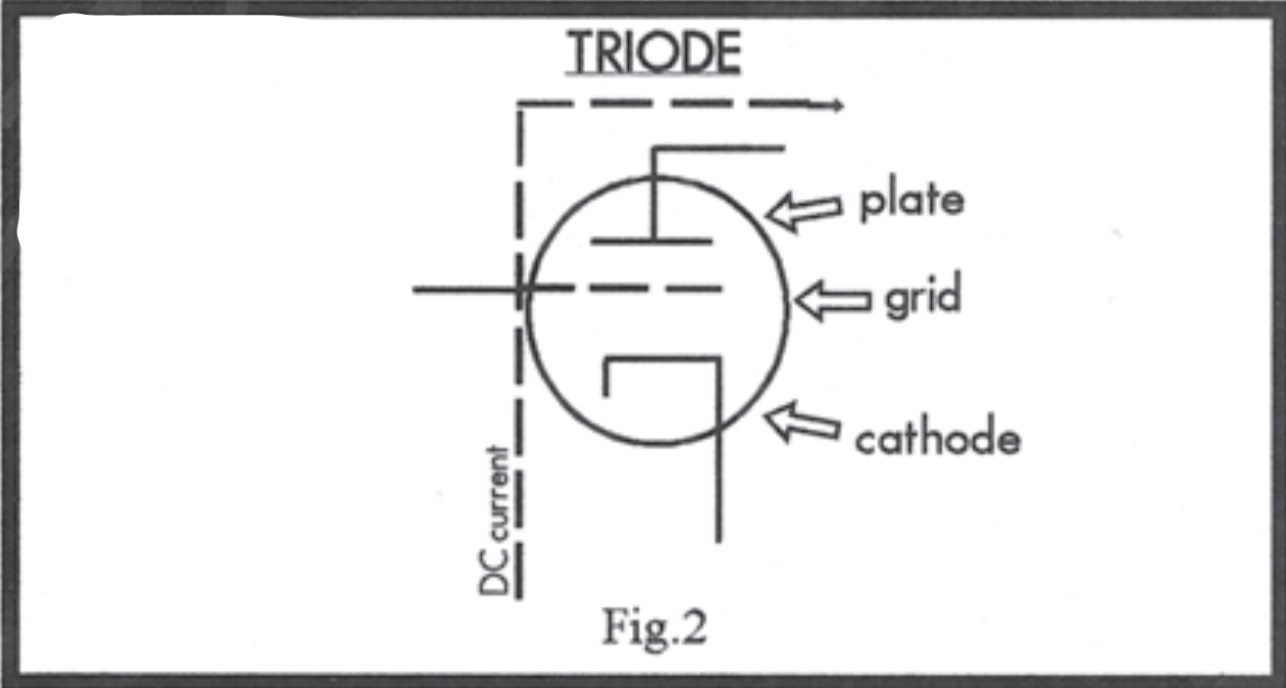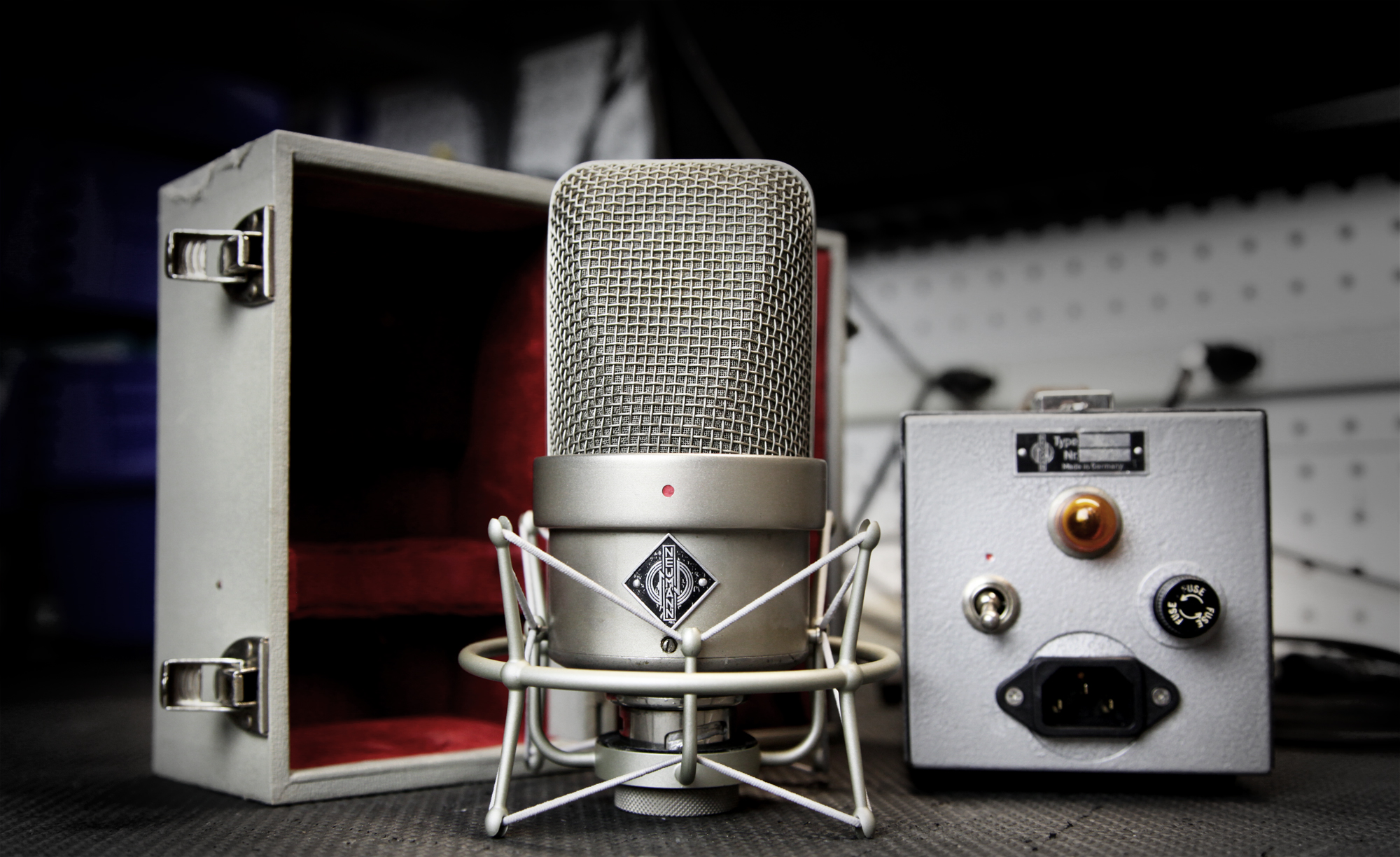Disclaimer #1: Do not open up your amplifier unless you know what you are doing! Tube amps work with lethal voltages that can remain in the amp even after it is unplugged. If you don't know how to discharge filter caps and how to safely work on your amp, don't try it. If you or your amp die, Larry and I are not responsible.
Disclaimer #2: I'm no expert. I've learned only from blowing shit up, shocking myself, and a little research on the side. Don't trust me. Do research for yourself. Start with a reprint of the RCA Receiving Tube Manual from Antique Electronics (602.820.5411).
Ahh, home at last. There's nothing like returning to Boston from a hot summer tour and hiding out in the cool basement in front of the workbench. Almost everywhere I went these last couple tours someone asked me about the Tape Op interview I did with Larry about tube amps. ("Hey, you're the guy who wrote that tube amp thing. Why does your amp make that nasty noise?"). We thought it would be a good idea for me to try my hand at a regular column. Having met so many of you interested in tubes, and having listened to your stinky sounding Marshalls all across the Midwest, I thought it might be time for some basic discussion on tubes and how they work, and also some practical knowledge about how we can make our tube equipment sound and work a little better. Now, I'm assuming if your reading Tape Op that you have a basic concept of the relationships between current, voltage, and resistance (ohm's law), as well as AC and DC, parallel and series, etc. If not, spend a few hours with your high school physics books and meet me at the next paragraph.
So how does a tube work? To answer this we need to understand what a tube does. Put simply, tubes in your amp primarily do two very important things: they rectify and amplify.
To understand how, let's start with a little history of the simplest of tubes: the light bulb. As you know, it is a vacuum in which AC current passes back and forth through a filament that heats it up so much that it glows white hot. Now, before the days of multinational, corporate-funded technologies, light bulbs were a bit different. Old bulbs got dirty as the filament burned and produced ash or dust in the bulb. The story goes that some scientist at some point-I forget who and when-tried to add another element to the bulb attract this dust and "clean up" the inside of the bulb. The theory was that if a positive voltage was applied to this second element, the dust would be attracted to it and it would clean up the inside of the tube. What was discovered by this is that electrons (current) actually flowed from the first element of the tube-the filament or cathode-to the second element of the tube-the anode, more commonly known as the plate because of it's physical appearance.
Stop for a minute and remember your high school physics: current, or electrons, (or burned filament dust particles, for that matter) flow from points of lower voltages to points of higher voltages. When your amp sounds like shit during soundcheck, and you pull the 9-volt out of one of your ten or eleven florescent stomp boxes and lick the contacts, what you feel on your tongue is electrons leaving the negative terminal, traveling through the ol' taste buds via/saliva which is conductive, and going to the positive terminal, the same way current flows through the tube. This idea is crucial to the operation of a tube, so keep it in mind as we proceed.
Now, the two element tube created a crucial discovery: this current flowed in only one direction: it was DC, just like a 9 volt battery. As we know, the current that flows through a wall socket to a light bulb is AC, and therefore flows back and forth in both directions. So what was discovered was a way to convert AC to DC, or to rectify: as AC flows back and forth through the filament 120 times per second, the plate produces DC current each time the AC current moves forward. As the AC moves backwards into a negative voltage, the DC stops at zero because a vacuum tube conducts in only one direction. What is left on the plate is 120 pulses of DC per minute. (See Fig. 1)
Your tube amp needs to rectify the wall's AC voltage because most of it's guts run on DC. Today this is usually done either with a tube rectifier, or with solid state rectifiers, although there are other methods that have been used. There's a good chance you're amp has a tube rectifier. Look at the tubes: if there is an odd number of big tubes, the farthest tube to the left or right side of the amp is probably the rectifier tube. Common amps with a tube rectifier are Fender Champs, Vibroluxes, Deluxes, 4x10 Bassmans, Ampeg B-15-Ns, Gibson Stereos and lots of older Gibsons and other older amps.
OK, back to work. So far we have a tube with two elements, the cathode with it's positive voltage, and the plate with it's more positive voltage. The current is flowing in one direction from the cathode to the plate.
At this point, what is needed is a way to control this current to make it useful. Enter the third element: the grid. This is a coil of wire that has space between each wrap of wire to allow electrons to pass through it. Fig. 2 is a schematic representation of this grid in a three element tube, or triode, and we can see that the grid is inserted between the plate and the cathode, right in the path of the current. This is much like a faucet installed between the water pipe and the spout of the kitchen sink to control the flow of water from the pipe to the drain.
Now, each element of this triode has it's own voltage: we already know that the cathode has a positive voltage, and the plate has a more positive voltage, and in between the two is a grid. The grid must have a negative voltage on it in relation to the cathode for it to effectively control the flow of current. Here's why: as the electrons (current) "look" toward the plate-where they would normally go because of the higher voltage, they see the grid instead. In this case, the electrons don't flow toward the plate/grid because they see the grid's negative charge. They stay put and no current flows. This is how the grid electrically "hides" the plate's high positive voltage from the cathode's low positive voltage, and current does not flow
This relatively-negative voltage on the grid is called the bias voltage. This is a term most of you have heard, but is often misunderstood: a bias voltage is a (usually negative) DC voltage applied to the grid to make it negative in relation to the cathode. A bias voltage can be positive under certain circumstances, or it can also be zero. As long as it is less positive than the cathode, we're in business.
Let's use a real example : in a Silverface or Blackface Fender Champ, the preamp section of the circuit utilizes one side of a 12AX7 preamp tube (this tube actually has two triodes in it) with around 2 DC volts on the cathode, and about 200 DC volts on the plate. The screen, therefore, needs to be less than 2 volts DC for it to have an effect on current flow. For now, lets assume the grid's bias voltage is -2 volts.
So how does it work? To understand, let's see what happens if we keep the plate and cathode voltages constant, but change the bias voltage from -2 volts to, say -1 or 0 volts DC? The tube turns on and more current flows. (fig. 3) Here's why: as the screen becomes more positive in relation to the cathode, electrons (current) begin to "see" past the grid as it's not so negatively charged, and they start to feel attracted to the much larger positive charge at the plate beyond. As the grid becomes more positive, it puts less pressure on the electrons at the cathode to stay put, and eventually they shoot past the grid toward the plate. Hence, as the grid becomes more positive in relation to the cathode, more current flows from the cathode through the plate. Conversely, as the grid becomes more negative in relation to the cathode, less current flows through the tube.
OK, some of you might be totally bored by now and might be asking yourselves why this is important. We can control current flow with a change in voltage in any circuit, right? Well, yes, but the important discovery here is that a relatively small change in bias voltage controls a much larger change in plate current. Think of the faucet: when you turn the handle (the bias voltage), you are doing a relatively small amount of work to control the water flow (the current). Only with the faucet can this be done. If you try and control the flow by putting your finger over the end of the spout, water will probably spray out all over the place because the pressure is too much. But with the faucet, a small amount of work is able to control much larger amounts of water than your finger could.
OK. Here's the million dollar question: where in your arsenal of equipment can you find a small fluctuating AC voltage to "control" this plate current? How about at the other end of your guitar cord? And what happens when we take this plate current and plug it into a speaker? Fucking brilliant. The big current flowing through the plate fluctuates with the same frequency as the small guitar pickup voltage, cacophony ensues, and we all slowly go deaf. Hence, the tube amplifies the guitar signal. It makes the small AC signal coming from your guitar pickups big enough to move a speaker cone.
Addendum for hard-core math geeks: Those of you that already know something about electronics and have been paying attention so far are thinking I fucked up: "You just said that the plate current fluctuates with the much smaller AC grid voltage, but earlier you said that a tube can't conduct AC." Well, perhaps a better way of saying this is that a tube only conducts positive voltages. Keep in mind that the plate always has a high positive voltage on it even when the grid is stagnant. The grid voltage adds and subtracts from the plate voltage. So if the grid goes from, say, -1 to 0 to 1 to 0 and back to -1 to complete the cycle, the plate might go from 200 to 230 to 260 to 230 to 200 to complete the amplified version of the same cycle, but never below 0.
If it does this 220 times per second, we have a very loud A. So that's how your amp works, right? Well, not exactly. A Fender Twin has about 15 of these cathode/grid/plate systems working together, along with about fifty other things going on at once. This is a very simple treatment of a very complex subject, but I hope that I have given you a basic concept of how tubes work.
Now for the practical knowledge I promised. Here's a simple way to bias your Fender amp: First, find a flat head screwdriver, a friend and a guitar, your Blackface or silverface Fender Twin Reverb, Deluxe, or Vibrolux that sounds like shit. (this will work on amps with AB763, AB769, AA270 tube charts or the like), a new set of power tubes (four 6L6's on a Twin, two 6v6's on a Deluxe, two 6L6's or 6v6's for the Vibrolux depending on the model), and a new driver tube. The driver tube is the small tube closest to the bigger power tubes. It will be a 12AX7 or 12AT7 depending on the model. (The two are actually interchangeable, and a 12AX7 has about 10% more gain than the 12AT7 and will make the amp a bit louder and raunchier.)
Here's what to do: Turn the amp off and change the tubes. You just replaced your power tubes but you didn't replace your driver tube, you say? Zealots, this is why your shit is cacophonic! Good tubes can sound like ass without a new driver. Also, if you have matched sets and it's an amp with four power tubes, make sure one set is on the inside and one on the outside, not one set on the left and one set on the right.
Next, fire up the amp and have your friend play guitar through it. Turn it up to the loudest you usually play it, and have your friend really lean into it. Now, from behind the amp, look past the power tubes in between the transformers for a small hole. This is the bias adjustment pot. Stick your flat head up in there and turn it a bit in either direction. You will notice that the amp gets slightly louder while you turn in one direction, and slightly quieter while you turn in another direction. While you are turning the screwdriver in the direction that makes the amp louder , watch the plates on the power tubes. These are the big gray parts that seem to surround everything else. When you see the plates start to glow orange, back off just a bit till they are gray again. Don't let the plates glow for more than a second because they will quickly burn up.
Any point before the plates start to glow that the amp sounds best is a good bias point. Although it is subjective, amps generally sound best right before the plates get to hot. Actually, they sound best when the plates are really glowing, but this is highly impractical unless you want to replace the tubes every half-hour. This isn't the most graceful way to bias an amp, but it actually works quite well and it's a good way to do it without killing yourself and without your mom suing me.
All right. I've bored and misled you enough. Feel free to send me more questions and comments and let me know if this is too complicated or too simple for you, and I will adapt and overcome. Next time I'll talk about filter caps: how they work, how they can give your amp more volume and clarity, and how to change them and charge them. Till then, rock on...





